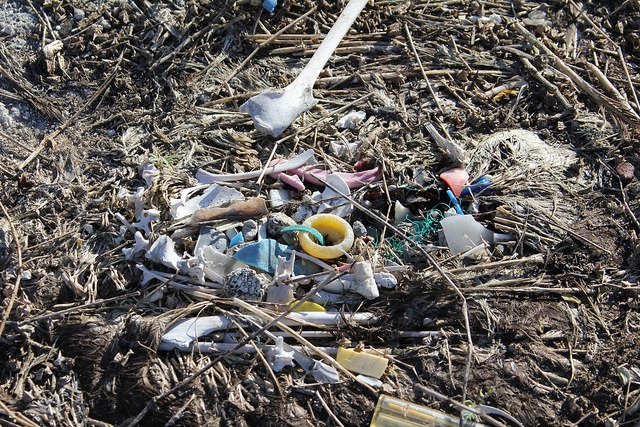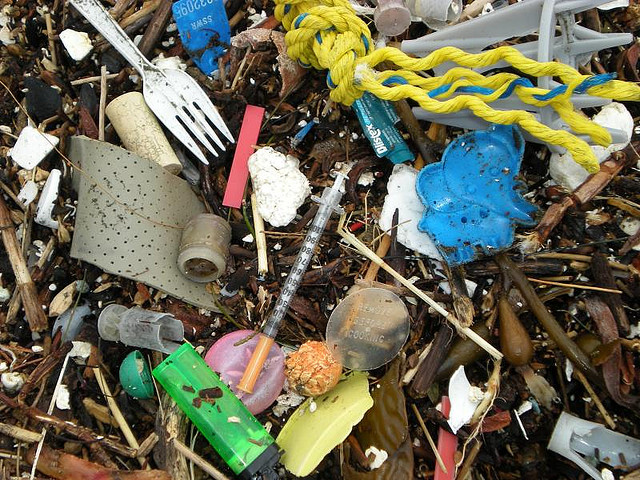The researchers measured the absorption of persistent organic pollutants (POPs) - specifically polychlorinated biphenyls (PCBs) and polycyclic aromatic hydrocarbons (PAHs) - to the five most common types of mass-produced plastics:
Polyethylene terephthalate (PET). Recycling symbol #1. Example: Water bottles.From this research it seems that stuff made from polyethylene and polypropylene likely poses a greater risk to marine animals (and presumably the people that eat them) than products made from PET and PVC. Though the authors note that PVC is carcinogenic and toxic all by itself.
High-density polyethylene (HDPE). Recycling symbol #2. Example: Detergent bottles.
Polyvinyl chloride (PVC). Recycling symbol #3. Example: Clear food packaging.
Low-density polyethylene (LDPE). Recycling symbol #4. Example: Plastic shopping bags.
Polypropylene (PP). Recycling symbol #5. Example: Yogurt containers, bottle caps.

"As the plastic continues to degrade, it's potentially getting more and more hazardous to organisms as they absorb more and more contaminants," says lead author Chelsea Rochman (UC Davis).
The research was conducted over a year at five sites in San Diego Bay with pellets of each type of plastic immersed in seawater and retrieved periodically for absorption measurements.




Guess they are waiting for someone else to clean up their mess.
That's what 'Mothers' are for right? Hide her, ridicule her and when you get a boo-boo, still expect her to take care of you. How typical is that for the acts of children?